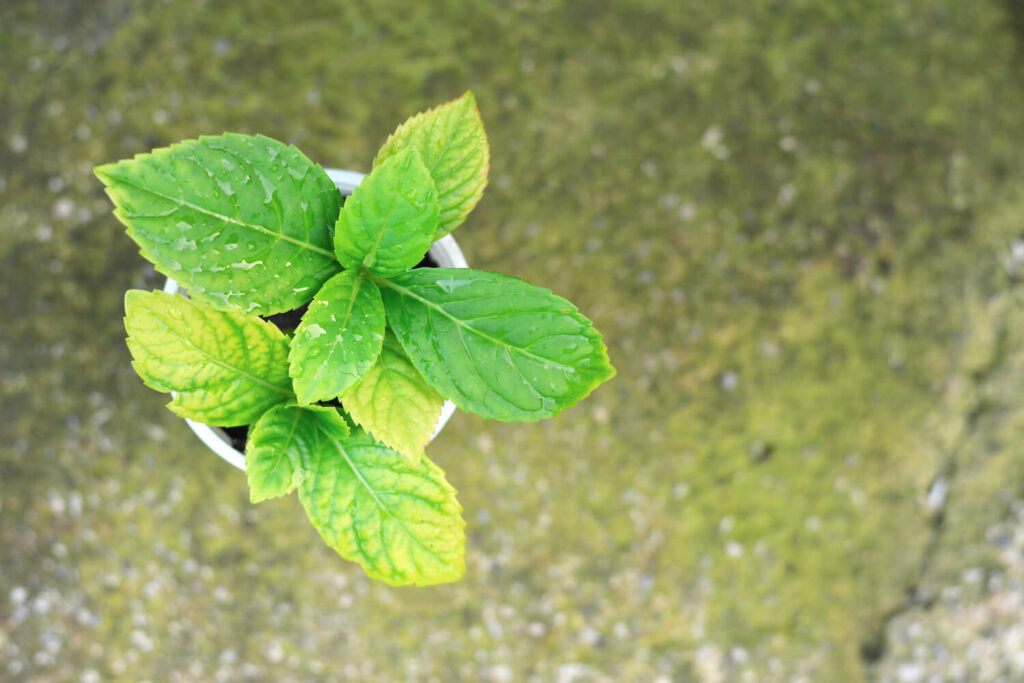9 Easy Facts About Hydrangea Leaves Turning Yellow Explained
Table of ContentsSome Known Details About Hydrangea Leaves Turning Yellow All about Hydrangea Leaves Turning YellowHow Hydrangea Leaves Turning Yellow can Save You Time, Stress, and Money.What Does Hydrangea Leaves Turning Yellow Mean?What Does Hydrangea Leaves Turning Yellow Do?
As you seen in the section above this can be triggered by underwatering. Overwatering can additionally cause dehydration, as counterproductive and odd as that may sound. Overwatering can choke off oxygen to the roots, which your houseplant needs to make it through. The moist water-soaked dirt will additionally suggest plant origins will start to pass away as root rot takes hold.Therefore the plant comes to be dehydrated although it is being in an abundance of water. Decaying roots will certainly transform slick and black with a mushy structure and a decaying scent. The fallen leaves of your hydrangea might diminish, and the ones that are still attached will certainly be yellowed or brown and be mushy at the stem.

Without your intervention, those fallen leaves will swiftly transform brown, then black as they melt. Where you put your hydrangea matters a great deal if you want your plants to keep its full depth of color and have appealingly eco-friendly fallen leaves. SIf your hydrangea is an interior plant in your home then you will likely have an option of 4 home window instructions: north, southern, east, and west.
Hydrangea Leaves Turning Yellow Can Be Fun For Everyone
Hydrangea obtaining great light, Direct sunlight for hydrangeas is ideal in the morning. Once the afternoon sunlight strengthens, the direct light is as well scorching, so provide indirect light to partial color. Spotted shade is an additional alternative. Enable me to discuss some of these "light" terms. Straight light is the type of light a plant obtains when it rests directly in the sun.
Spotted shade suggests your hydrangeas have overhead cover, such as a bigger tree or plant. The sunlight comes with directly, but the cover of the larger plant permits the sunlight in only occasionally via the openings in the branches or leaves. Hydrangeas can grow in straight sun as long as they are well sprinkled a watered frequently.
Photosynthesis, as we all recognize, is crucial for plant survival, so chlorosis demands to be dealt with swiftly. Hydrangea Leaves Turning Yellow. While chlorosis can be triggered by other nutrient shortages, it is most frequently an iron deficiency. In the following area you will find out exactly how to acknowledge whether your plant has an iron deficiency or another thing
First appears on the older fallen leaves, however the fallen leave capillaries continue to be eco-friendly. While there is generally adequate iron in all-natural dirt, hydrangeas commonly have a hard time to absorb sufficient of it.
Hydrangea Leaves Turning Yellow Fundamentals Explained
The very best way to avoid iron deficiency-chlorosis in hydrangeas is to plant them in appropriate ericaceous or acidic dirt. When planting in a bed, mix in some peat or reduced-peat ericaceous garden compost and inspect the p, H worth yearly. This is needed due to the fact that the garden compost combination around the plants will certainly affect the p, H worth of the soil over time and the p, H worth may increase once again.
It is just used on an industrial scale, where a prolonged iron deficiency would certainly indicate considerable yield losses. The unique fertilizers for this are often pricey and require to be applied in really specific doses to avoid damage to the fallen leaves. Foliar fertilisation is only effective for a short period and has to visit homepage be applied regularly or supplemented by normal iron fertilisation.
Input your search keyword phrases and press Get in.
We're ideal in the middle of our late-blooming hydrangea season right here, so I assumed I would certainly share a suggestion for this specific sort of hydrangea that I located actually interesting. A great deal of people have a similar concern with their panicle hydrangeas where they begin to see the fallen leaves transforming yellow and leaving at various components of the period and it can be pretty remarkable and quite worrying because it can occur actually promptly on a shrub that looks like it's or else really healthy.
9 Simple Techniques For Hydrangea Leaves Turning Yellow
I've shared it on Instagram prior to, however I realized I've never informed you regarding this in a genuine, complete post, so today I'm looking after that. When I say that this relates to panicle hydrangeas, that suggests the kind of hydrangeas that generally bloom later in summer season, normally around August.

If you truly intend to optimize flowers, a (the middle number) will actually aid enhance the number and dimension of your blooms. You should see the number of newly-yellowed leaves decrease rather quickly as quickly as you give your hydrangea the food it requires. The bright side is that if you do absolutely nothing, the plant will still be fine, it will certainly just have a couple of less leaves.
Courtenay is the author of the publication The Cleansing Ninja and has actually been featured in numerous publications including Nation Sampler Farmhouse Style, Better Residences and Gardens, Parents Magazine, Real Simple, and Our Homes.
Hydrangea Leaves Turning Yellow Things To Know Before You Get This
The places form because of water declines from rain or watering that remain on leaves during warm and moist problems. This is particularly true click this link in huge plant baby rooms and property or business landscapes that use overhanging irrigation see post often. When making use of overhead irrigation it is best to water in very early to mid morning so the sun can dry out the water from foliage.